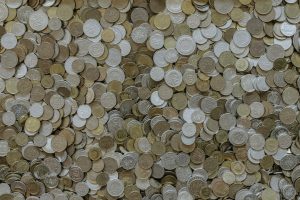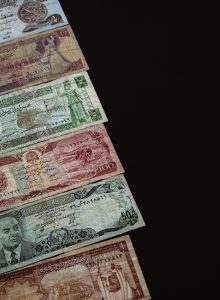The foreign exchange market, also known as forex or FX, is the largest financial market in the world, with an average daily trading volume of over $5 trillion. It is a decentralized market where currencies are traded 24 hours a day, 5 days a week. However, forex was not always accessible to the public. In this article, we will explore the history of forex and when it was made open to the public.
The origins of forex can be traced back to the 19th century, when countries began to adopt the gold standard. Under the gold standard, the value of a country’s currency was tied to a fixed amount of gold. This meant that currencies could be exchanged for gold at a fixed rate, creating a stable international monetary system.
However, the gold standard was abandoned during World War I, as countries needed to print more money to finance their war efforts. This led to the creation of the Bretton Woods system in 1944, which established the US dollar as the world’s reserve currency. Under this system, other countries fixed their currencies to the US dollar, which in turn was pegged to gold at a rate of $35 per ounce.
The Bretton Woods system lasted until 1971, when President Richard Nixon suspended the convertibility of the US dollar into gold. This led to a period of volatility in the foreign exchange market, as currencies began to float freely against each other.
It was during this period of volatility that forex trading became accessible to the public. Prior to this, forex trading was largely the domain of banks, governments, and large multinational corporations. However, with the advent of electronic trading platforms and the internet, individual traders were able to access the forex market and trade currencies from their own computers.
One of the first electronic trading platforms was the Reuters Dealing 2000-2 system, which was launched in 1987. This platform allowed banks and other financial institutions to trade currencies electronically, and paved the way for the development of other electronic trading platforms.
In the 1990s, retail forex brokers began to emerge, offering individual traders the ability to trade currencies on their own accounts. These brokers typically offered leverage, which allowed traders to control large positions with a relatively small amount of capital. This made forex trading accessible to retail traders with limited capital, and led to a surge in popularity for the market.
Today, forex trading is accessible to anyone with an internet connection and a trading account. Retail forex brokers offer a wide range of trading platforms, educational resources, and trading tools to help traders succeed in the market. The market is highly liquid, with trading volumes reaching over $5 trillion per day, and offers opportunities for traders to profit from fluctuations in currency prices.
In conclusion, forex trading was made accessible to the public in the 1990s, thanks to the development of electronic trading platforms and the emergence of retail forex brokers. Today, forex trading is a global market that offers opportunities for traders of all sizes to profit from fluctuations in currency prices. However, it is important to remember that forex trading involves a high degree of risk, and traders should only trade with capital that they can afford to lose.





